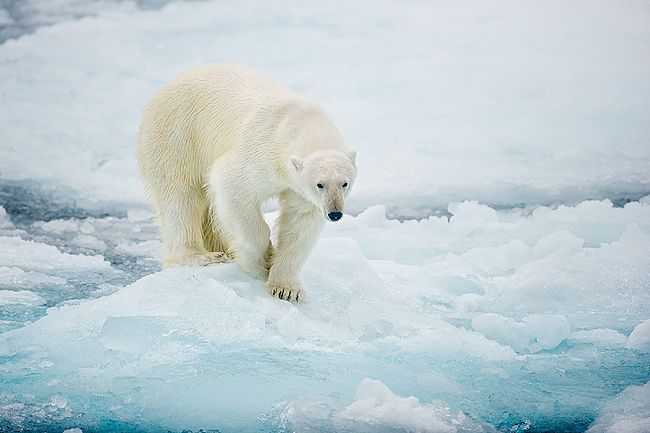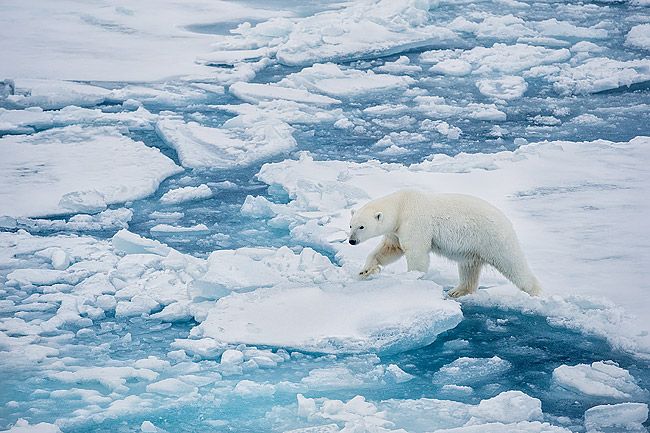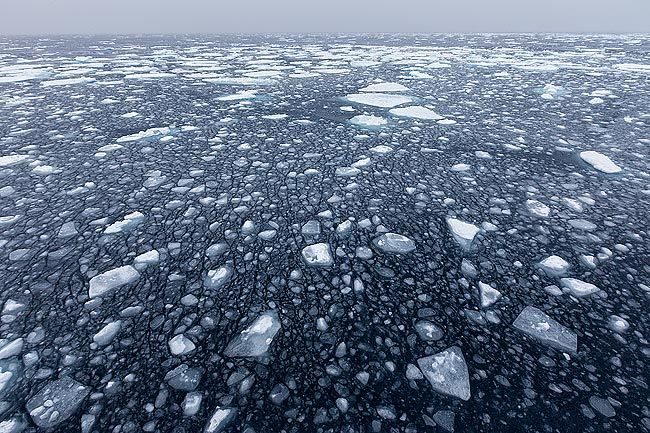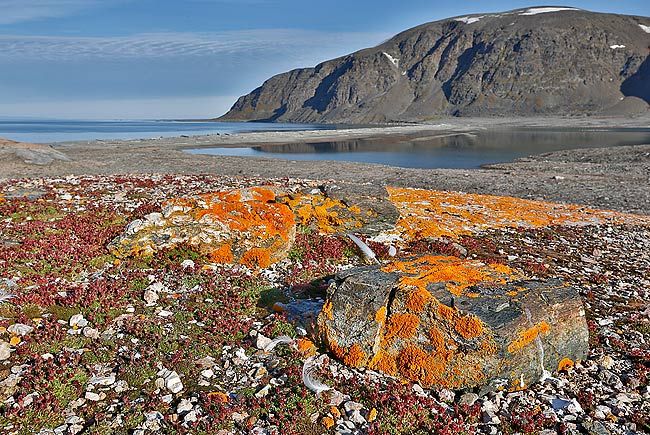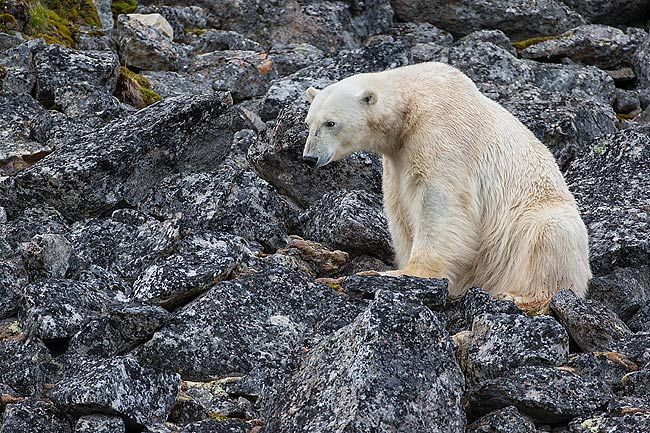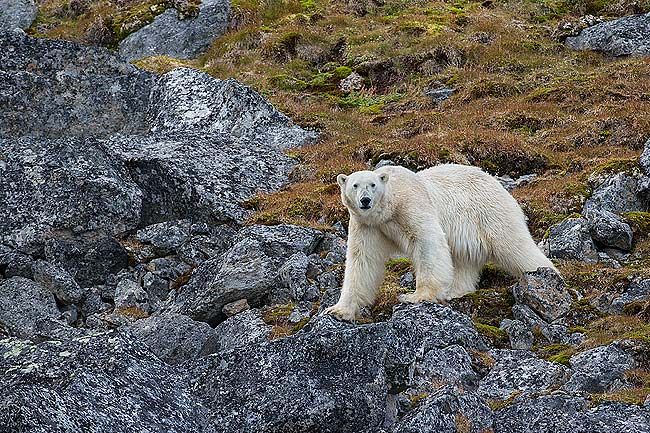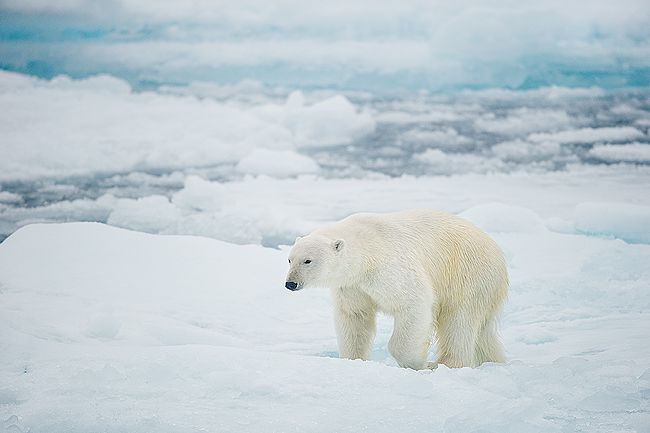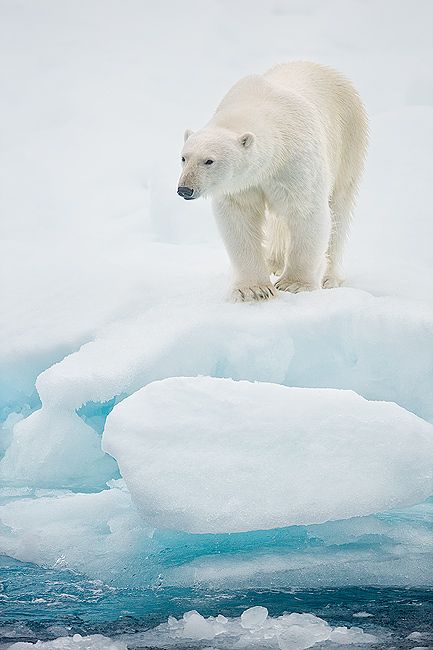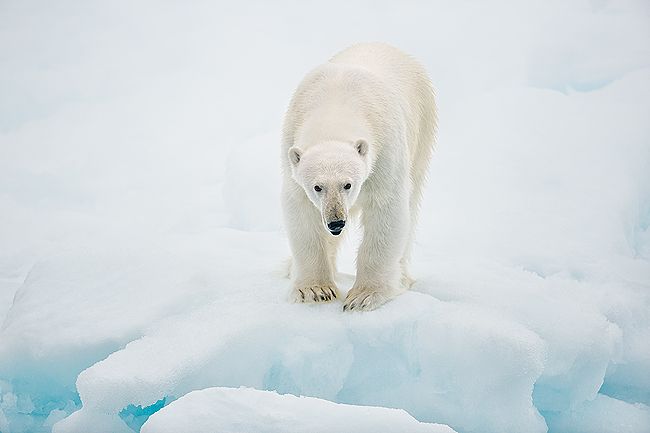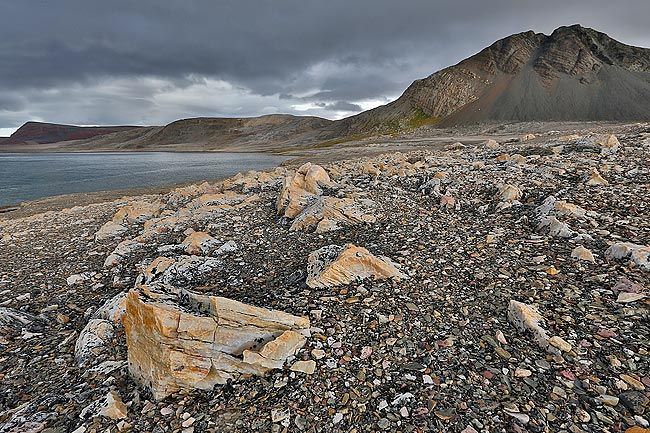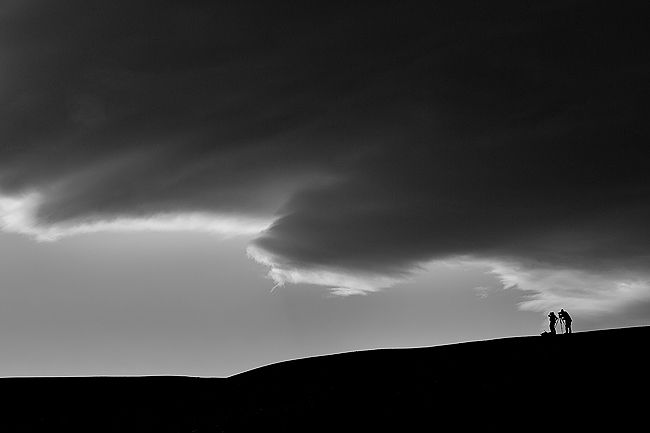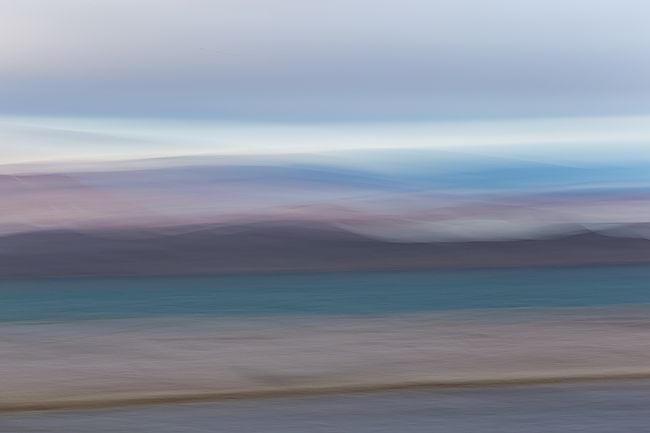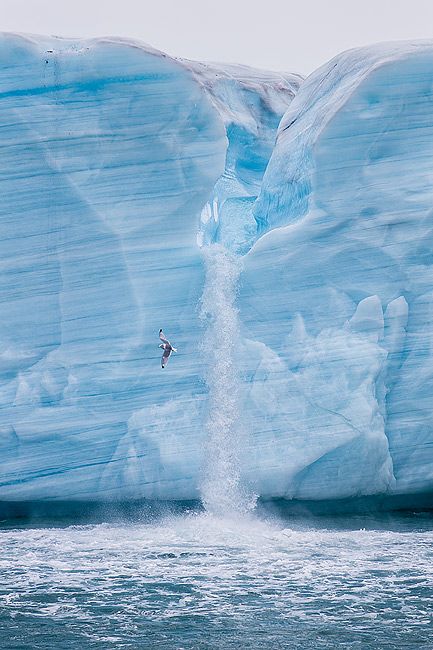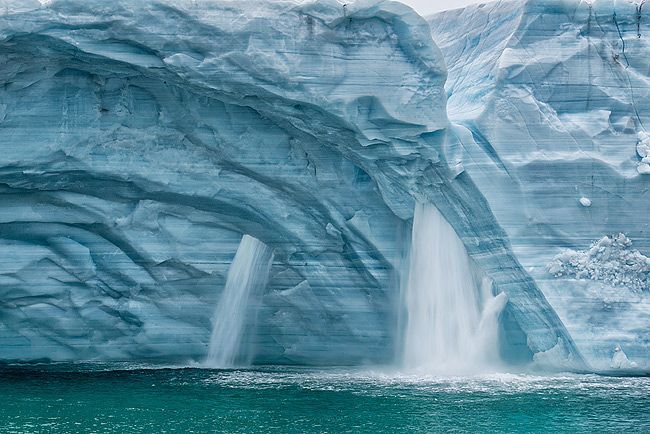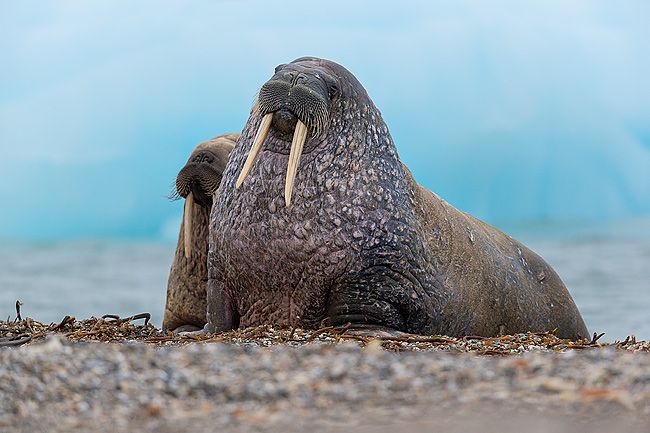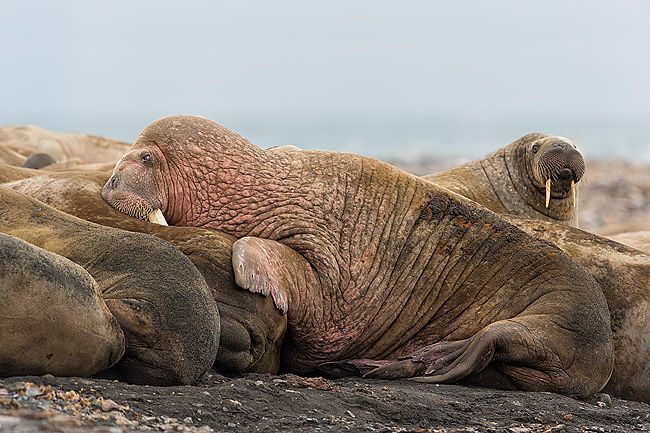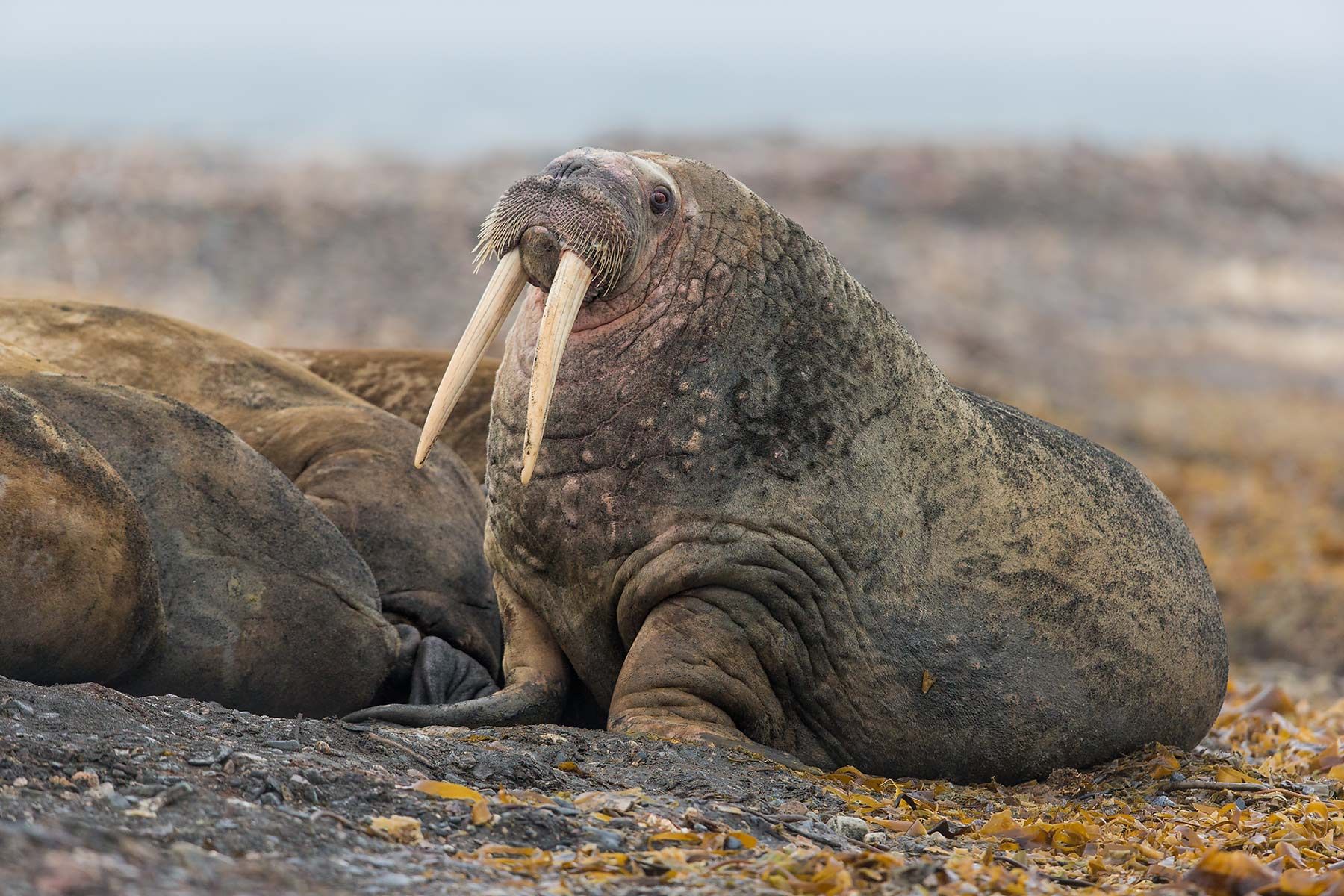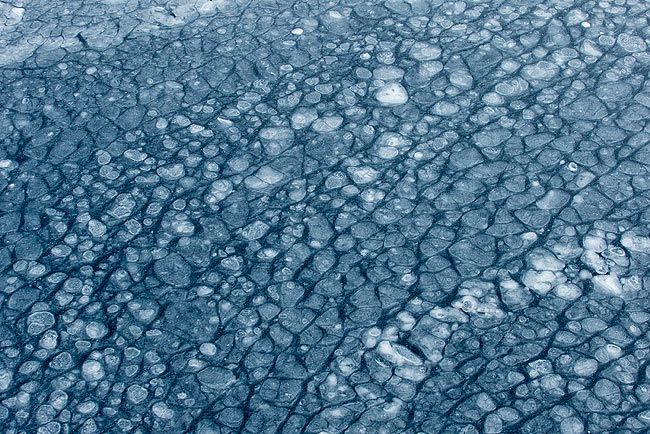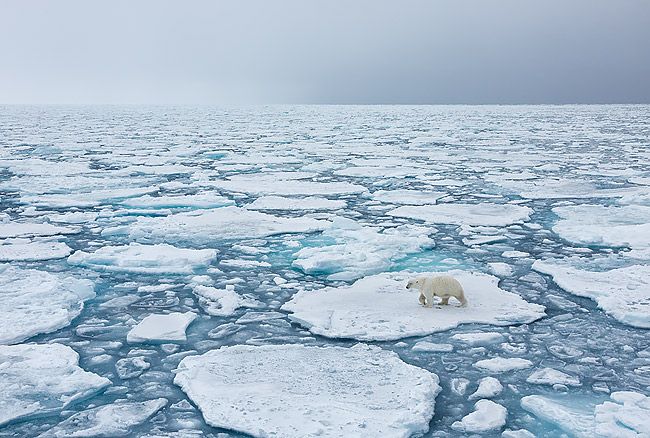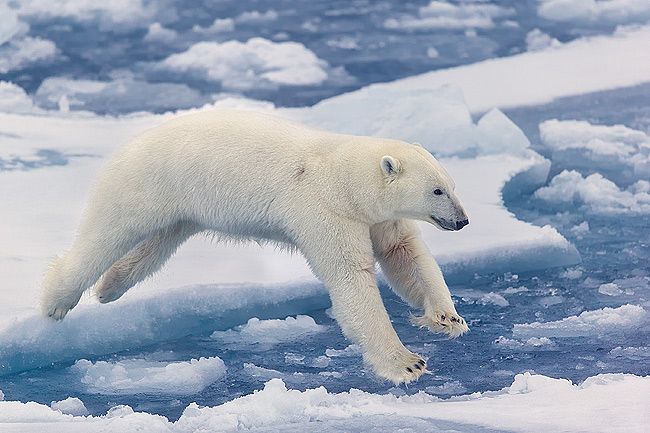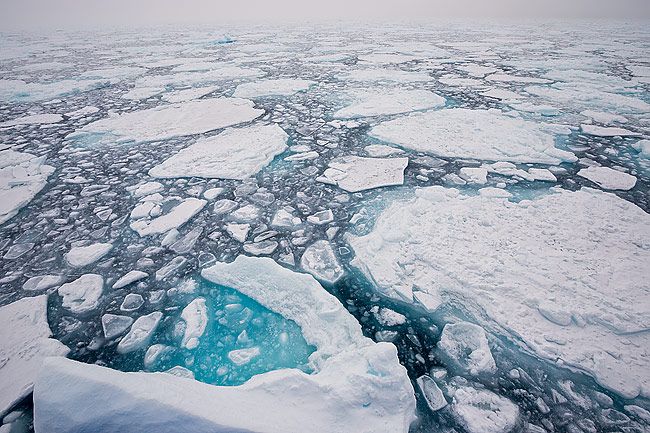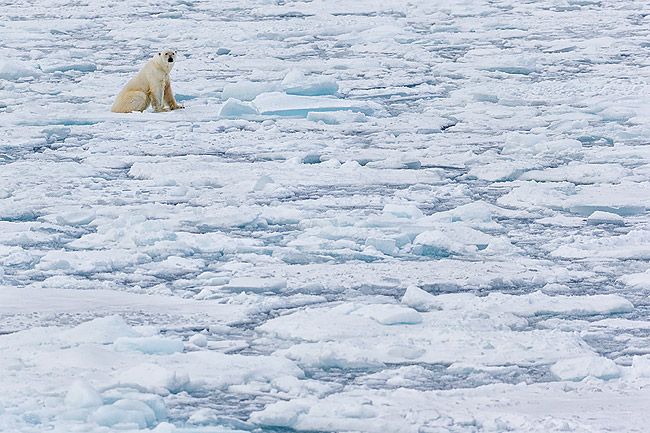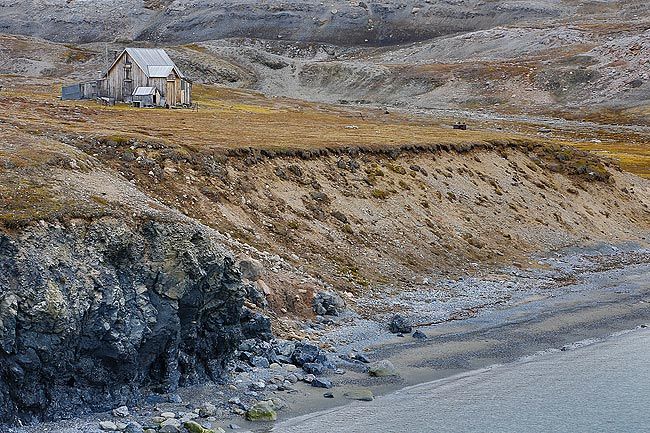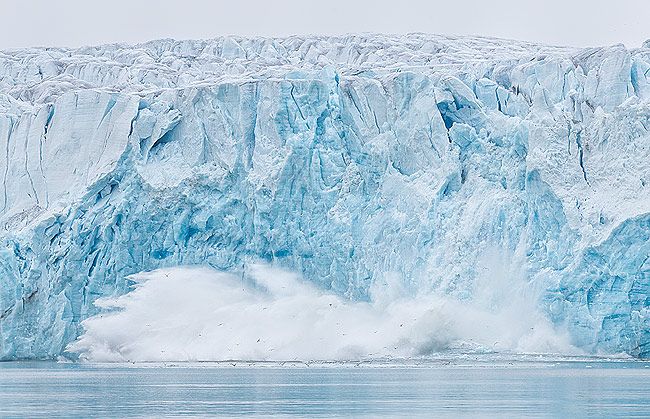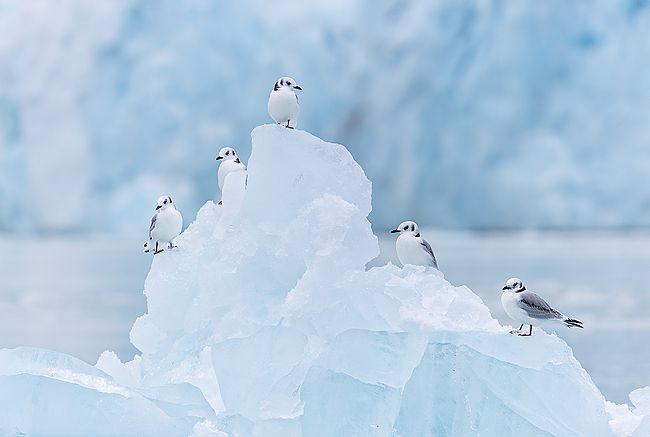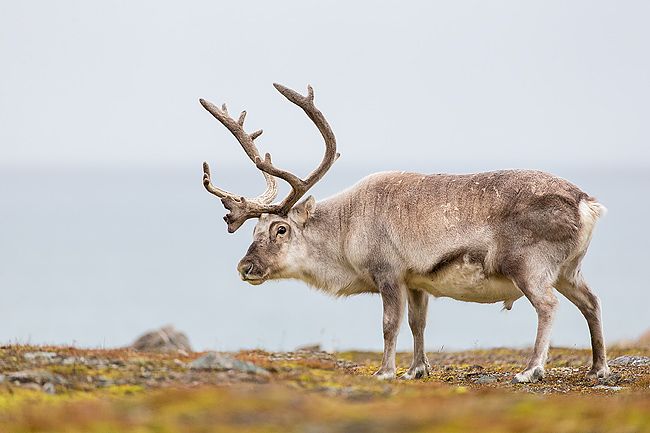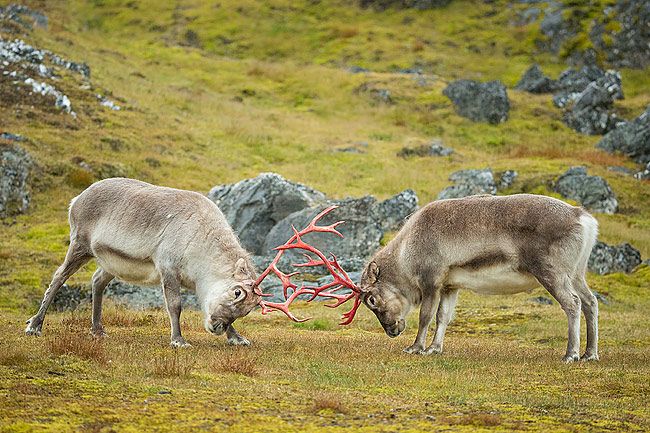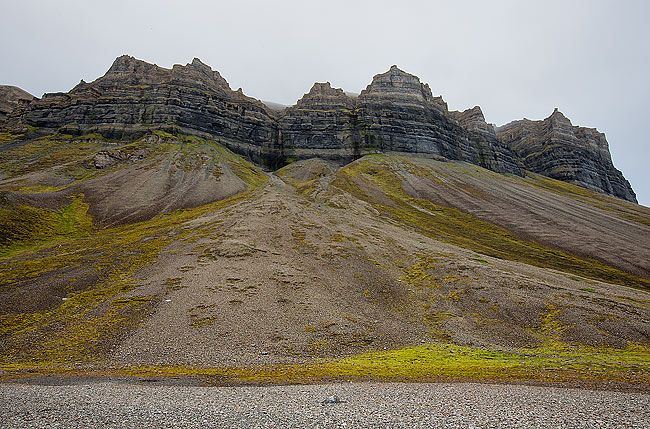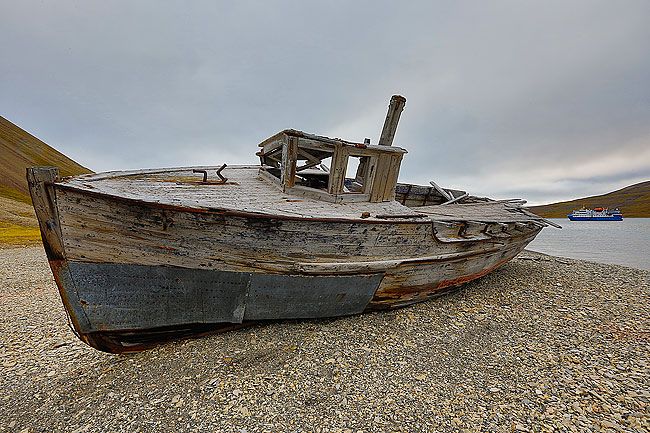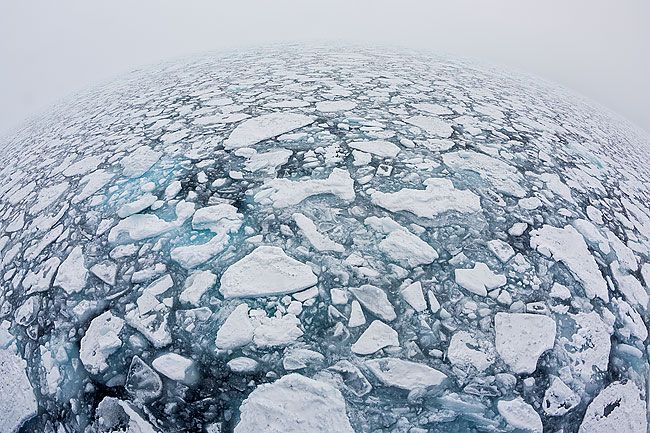One of the great things about photography of the natural world is the fact that it makes you realize how perfect nature has balanced all the elements. Every little piece has its place in a larger part. If we consider the food chain, which starts of with very small entities, such as krill at sea and little insects on land, and goes all the way to the top where the large predators rule the kingdom. But also the systems that keep the earth moving and provide a consistent habitat for all living species, such as ocean currents, weather systems and temperature zones. Together with the cyclical movements of the planet in the larger solar system, this is the earth we know and live on. Since the last ice age some 20,000 years ago the earth has not encountered any major disruptions, and the last 6,000 - 8,000 years have been pretty stable with respect to the earth's climate. All the elements are in sync with each other or have adapted over the course of thousands of years. All seems totally fine, and on course for the next undisturbed millennia. If you think this is too good to be true, you are right! It isn't. The world is changing, and it is changing very fast.
On top of the world
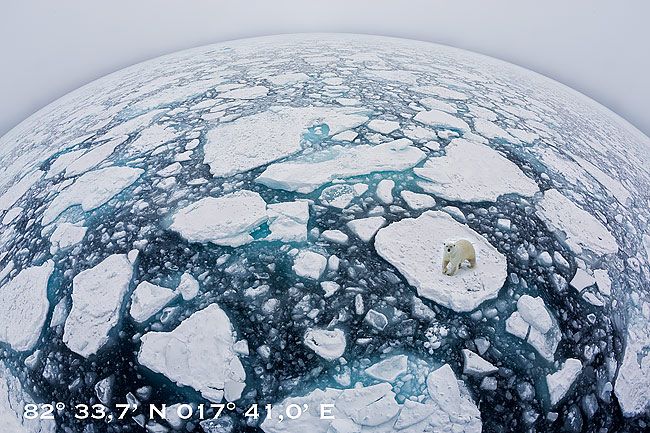
Polar bear in his natural habitat on top of the world, Canon EOS 5D MkIII, Canon EF 15mm/f2.8 Fisheye @ 15mm, f16, 1/100s, ISO 640, Manual exposure. Image by Clemens Vanderwerf and copyright 2013
The one factor that is the cause of the change is the human race. It is us, and the truth is there is really nobody else to blame. We are the reason that planet earth is changing so fast, and the simple reason is that the carrying capacity of the earth is not big enough to support all of us with our continuous quest for economic progress. The world population has more than doubled in size since the 1950's and is currently around 7 billion people. Forecasts show further exponential growth to 9 or 10 billion people by the middle of this century. This is pretty scary if you thing about the fact that all these people will need to live somewhere, will need to consume food and will burn huge amounts of fossil fuels to get by each day. Our current human footprint on the planet has changed the fragile balance of our natural world, and our climate is changing, with profound effects on temperature and sea levels. Everybody has noticed the increase in extreme weather patterns lately, especially here in the US. Scientists have no uniform opinion as to what is the reason behind these extremities, but it is hard to argue that climate change as a result of global warming has absolutely no impact. The truth is, we as humans have never had to deal with this before, we are off to uncharted territory when it comes to the impact of global climate change on our near future and the generations beyond us.
Polar bear on sea ice at 82 degrees North, Canon EOS 1Dx, Canon EF 600mm/f4 IS II @ 600mm, f4, 1/1600s, ISO 1600, Manual exposure, hand held. Image by Clemens Vanderwerf and copyright 2013
My recent travels to the Southern Ocean, South Georgia islands and Antarctica have opened my eyes to what is happening around us. It is so easy to consume yourself in everyday life and our constant push to raise ourselves on the social ladder that any reflective perspective of the world we live in is blurred by daily news facts and seemingly endless political battle. Only when you experience the beauty of this world in one of the most pristine, unspoiled areas far away from the humming of our human existence, it hits you and you start to realize what is really happening. It is a humbling experience, and it makes you realize how small we are in the bigger scale of things, but how enormous our collective impact is on shaping the world around us, both negative and positive. I only once had such an experience before during a executive management course at IMD in Lausanne, Switzerland some 12 years ago. We got to watch the movie "Celebrate What’s Right with the World", which uses stunning photography and powerful dialogue to help viewers approach their lives with celebration, confidence, and grace. DeWitt Jones did a magnificent job with this movie, and put me to tears for the remainder of that day. I am convinced that with sharing the beauty of this world by stunning images, we can make a difference for the better, and persuade people to change their behavior.
Polar bear walking on sea ice at 82 degrees North. Canon EOS 1Dx, Canon EF 200-400mm/f4 IS @ 200mm, f4.5, 1/800s, ISO 1250, Manual exposure, hand held. Image by Clemens Vanderwerf and copyright 2013
After having experienced the far south side of our planet I wanted to see the difference with the far north. The two polar worlds are obviously very different with the main distinction that the Antarctic is actually a large continent and landmass which contains about 90% of the worlds fresh water content in the form of ice. The Arctic does not have a large polar landmass at the center and consists for a large part of a floating ice mass surrounded by parts of land and islands belonging to the different continents of Asia, Europe and North America. From a wildlife perspective it is pretty simple. There are no penguins in the Arctic and no polar bears in the Antarctic. At the end of August I embarked on a 10 day trip to the high Arctic. The starting point was Longyearbyen on the islands of Svalbard (Spitsbergen), the northernmost part of Norway and about midway between mainland Norway and the North Pole. Dutchman Willem Barentsz made the first indisputable discovery of Svalbard in 1596, in an attempt to find the Northern Sea Route.
Pancake and sea ice at 82 degrees North, Canon EOS 5D MkIII, Canon EF 16-35 mm/f2.8 II @ 16 mm, f10, 1/200s, ISO 500, Manual exposure. Image by Clemens Vanderwerf and copyright 2013
After a long travel day from Miami I arrived at Longyearbyen close to midnight. It was still light upon arrival as around this time of the year there is 24 hour of daylight. The next day we boarded the small expedition vessel Quest, a converted ferry, that accommodated about 50 persons. As this expedition was organized by wildlife photographer Charles Glatzer, and landscape photographers Daniel Bergmann and Peter Cox, you can imagine that rest of the participants were also photographers. Not surprising that the amount of camera equipment that needed to be carried on board was staggering. After settling in and managing to stow all the cold weather gear and photo equipment in the cabins, we met the captain and his crew and the expedition leader Morten Jørgensen and his staff for a briefing on the days to come. As is always the case with these type of voyages there is a wish list of destinations and wildlife, but any planned itinerary is about to be changed based on local weather and sea conditions. That is why it is called an "expedition" instead of a cruise, as Morten clarified with a smile during the briefing. We left Longyearbyen in the evening and sailed through the night to our first destination in the north of the archipelago. We arrived in the morning with bright blue skies at Raudfjorden where we made our first landing at Kapp Svensksund. Since a large part of the photographers on board qualified as landscape photographers the search for interesting foreground subjects was on, and neutral density filters were being pulled from camera backpacks to battle the bright light and to smooth out the water surface. Interesting bolders and driftwood along the beach line made a star appearance in many pictures. I focussed my attention of the orange colors of the lichen.
Orange lichen on rocks landscape. Canon EOS 5D MkIII, Canon EF 16-35 mm/f2.8 II @ 30 mm, f18, 1/200s, ISO 400, Manual exposure. Image by Clemens Vanderwerf and copyright 2013
In the afternoon we crossed Raudfjorden to the west side were we cruised in the zodiacs through the inlet of Hamiltonbukta. Two large glaciers came together in the cove and provided for some nice scenery and spectacular glacial ice sculptures. The cove was surrounded on each side by large mountain peaks of which some vertical walls were covered with colorful orange and green lichen. Much to our surprise and enjoyment the first polar bear of the expedition was spotted up on the mountain slope. The little white dot among the grey rocks was fast asleep, and did not bother to move at all. Actually, this is pretty typical behavior for a polar bear stranded on an island in the summer in the Arctic. With the sea ice slowly retreating as the Arctic spring turns into summer not all polar bears make it in time to get the last sea ice train to the north. The sea ice is very dynamic and moves in and out quickly with the tidal flow and the prevailing wind. As long as the polar bears accumulated enough fat reserves from eating seals during the spring, they are able to survive for a couple of months without food on land waiting for the sea ice to return at the early start of winter.
Polar bear deciding what to do. Canon 1Dx, Canon EF 200-400mm f/4L IS USM Lens with Internal 1.4x Extender @ 560mm, f5.6, 1/800s, ISO 1600, Manual exposure, hand held. Image by Clemens Vanderwerf and copyright 2013
Patiently, we waited in the zodiac at the bottom of the slope hoping that the polar bear would give us a different pose to photograph. Nothing happened. We decided to make another loop through the cove and come back later to try again. The second time around we parked the zodiac at the bottom of the slope again and waited. Nothing happened, the bear still fast asleep. Then a Bearded seal popped his head out of the water right next to the zodiac, we all turned around and started photographing the seal, until we heard a muffled voice saying "the bear is moving, he is coming down fast". To our surprise, the polar bear had smelled the seal and came down the slope to claim his snack. The excitement in the zodiac became more intense with the increase in pace of the polar bear. But nothing is easy, also not for a polar bear, and the seal had disappeared to safer grounds. The bear stopped and was debating if he would pursue those strange floating objects in the water or go back to sleep again. He chose the last option and settled back between the rocks for another nap. Fulfilled and amazed by what we had just experienced we made our way back to the ship and had stories to tell over dinner. That evening we pulled anchor and headed north for the sea ice.
Polar bear coming down the hill. Canon 1Dx, Canon EF 200-400mm f/4L IS USM Lens with Internal 1.4x Extender @ 400mm, f5.6, 1/1000s, ISO 1600, Manual exposure, hand held. Image by Clemens Vanderwerf and copyright 2013
The conditions in the Arctic are changing dramatically through the seasons. During the winter the Arctic experiences 24 hour-a-day darkness. The year round cold temperatures plunge even lower, and the sea surface freezes over. During the height of summer there is 24 hour-a-day sunlight in the Arctic. Even though it is cold, the constant sunshine, warmer air, and warm waters from further south melt the ice. Usually, the ice cap starts shrinking in March, and reaches its smallest area in mid-September, before cooler temperatures and shorter days start freezing the water and growing the ice cap again.
Polar bear walking on sea ice at 82 degree North, Canon EOS 1Dx, Canon EF 600mm/f4 IS II @ 600mm, f4, 1/1600s, ISO 1600, Manual exposure, hand held. Image by Clemens Vanderwerf and copyright 2013
The amount of ice left in the Arctic around mid-September has been plunging. In 1980, the ice shrank down to just under 8 million square kilometers before rebounding in the fall. Last year’s minimum extent of 3.4 million kilometers is less than half of what it was in 1980. Strikingly, two thirds of the loss of ice has happened in the 12 years since 2000. The ice is receding, and the melting appears to be accelerating. The amount of ice remaining is about the same as the ice lost between the mid-1990s and today. If ice loss continued at that pace, we will see an ice free summer sometime around 2030.
Polar bear on sea ice at 82 degrees North, Canon EOS 1Dx, Canon EF 600mm/f4 IS II @ 600mm, f4, 1/1600s, ISO 1600, Manual exposure, hand held. Image by Clemens Vanderwerf and copyright 2013
Polar bears depend on the sea ice as platform from which to hunt seals and other marine mammals during the winter. With the ice residing earlier in the spring and returning later in the fall the hunting season for the polar bears is cut short causing bears to lose valuable feeding time, lose body condition, have reduced reproduction and lower survival of cubs. These changes to the timing of migration have resulted in polar bears spending progressively longer periods of time on land without access to sea ice and their food source.
Polar bear on sea ice at 82 degrees North, Canon EOS 1Dx, Canon EF 600mm/f4 IS II @ 600mm, f4, 1/1600s, ISO 1600, Manual exposure, hand held. Image by Clemens Vanderwerf and copyright 2013
In the afternoon of the next day we reached the sea ice and slowly started moving along the edge in search for polar bears in their natural habitat. As often happens a thick layer of fog hovered above the sea ice and made spotting a white polar bear on white ice in white fog quite challenging. When the expedition team spotted a male bear along the ice edge, the excitement grew high among everybody and camera gear was hauled on deck to capture the first polar bear on sea ice. The bear curiously watched the dark colored ship silhouette that appeared out of the fog and entered his world of solitude. Once his curiosity was satisfied he walked off into a cold and icy void.
The weather forecast for the next couple of days showed a low pressure area and increasing winds and it was decided to head back to Svalbard and seek shelter among the islands and fjords. The next morning we arrived on the north side of the archipelago at Murchisonfjorden where we made a landing at Florabukta.
In camera HDR landscape. Canon EOS 5D MkIII, Canon EF 16-35 mm/f2.8 II @ 30 mm, f18, 1/30s, ISO 400, Manual exposure. Image by Clemens Vanderwerf and copyright 2013
Photographers at work under dark storm clouds. Canon EOS 5D MkIII, Canon EF 24-105 mm/f4 IS @ 105 mm, f8, 1/2500s, ISO 400, Manual exposure. Image by Clemens Vanderwerf and copyright 2013.
Geology around the islands is pretty spectacular with a wide range of differing landscapes. From jagged mountain ridges and plateau-shaped nunataks, to gentler slopes with peculiar, reddish colors. Svalbard has an enormous diversity in geological formations and many geological eras are exposed in the outcrops. The bare landscape, gravel beaches and a very small waterfall provided the ingredients for the landscape photographers among us. In the afternoon we cruised along a couple of smaller islands in search for walruses, and ended with a landing on a spit waiting for the ship to pick us up. Since the light was very low I started experimenting with pan-blurs of the landscape. The muted reddish colors and the painterly look of the pan-blurred images described the sense of the place for me very well.
Landscape pan-blur with muted colors. Canon 1Dx, Canon EF 200-400mm f/4L IS USM Lens with Internal 1.4x Extender @ 386mm, f32, 1/2s, ISO 50, Manual exposure, hand held. Image by Clemens Vanderwerf and copyright 2013
During the evening we sailed south into the Hinlopen Strait on our way to the south side of Nordauslandet. We passed by the famous bird cliffs of Alkefjellet, a vertical rock cliff, up to a good three hundred feet high, with spectacular columnar structures and home to several ten thousand breeding pairs of Brunich’s guillemots, Kittiwakes and Glaucous gulls. The next morning we slowly approached the enormous ice cap of Bråsvellbreen.
Melt water river coming of the ice cap. Canon 1Dx, Canon EF 70-200mm f/2.8L IS USM II Lens @ 190mm, f5.6, 1/800s, ISO 640, Manual exposure, hand held. Image by Clemens Vanderwerf and copyright 2013
This ice cap is named because of a sudden advance in 1937-38, a so-called surge. The total surface area of the ice cap is 430 mile2 and the ice cliff is about 110 mile long. This makes it the longest glacier front of the northern hemisphere. On the large surface, meltwater forms streams during the summer, which cascade down the glacier front in waterfalls in some places. Photographing the cascading water was the main focus, and I tried to create a sense of motion in the water by slowing down the shutter speed to 1/15s or 1/8s. As I was shooting with a handheld long lens, it was quite a challenge to keep the glacier sharp with such a slow shutter speed.
Glacier front with melt water streams. Canon 1Dx, Canon EF 70-200mm f/2.8L IS USM II Lens @ 105mm, f16, 1/13s, ISO 50, Manual exposure, hand held. Image by Clemens Vanderwerf and copyright 2013
After making several passes along floating icebergs we sailed back north again through the Hinlopen Strait and made a landing at Torellneset, where a group of walruses were laying on the beach. An iceberg was beached right behind the walruses and provided a nice background with the blue colors of the ice. In order to get a pleasing image it is important to single out one or two walruses and take a low point of view to create a nice clean background with no distracting elements. Since all the walruses are usually stacked together in a tight group is is hard to find the separation. By moving to the far right of the group I was able to single out one of them and still keep the iceberg in the background. Upon returning to the zodiacs we heard that one of the walruses had punched a hole with his teeth in the side of a zodiac.
Walrus on beach posing with iceberg in the back. Canon EOS 1Dx, Canon EF 600mm/f4 IS II and TC 1.4x III @ 840mm, f5.6, 1/1600s, ISO 2500, Manual exposure. Image by Clemens Vanderwerf and copyright 2013
Walrus relaxing on beach. Canon EOS 1Dx, Canon EF 600mm/f4 IS II @ 600mm, f5.6, 1/800s, ISO 1000, Manual exposure. Image by Clemens Vanderwerf and copyright 2013
The plan was to go back to the sea ice when a weather window would open up and the low pressure area had passed. We needed another day of shelter on the north side of the archipelago before we could head out due north for a second attempt to see polar bears in their natural habitat on the sea ice. We visited the island of Lågøya, which is mostly flat with low hills and some smaller and larger lagoons and lakes. Another group of walruses was the main focus point during our visit. A second landing and zodiac cruise was made in the afternoon at Phippsøya, the largest island of a group of islands in the far north of Svalbard. A polar bear and cub were spotted walking along the beach, but by the time we were able to get close with the zodiacs they had retreated up on the hillside and were reduced to two very small white dots in an otherwise grey, rainy and bare landscape. Later that evening we set sail on a northerly course on our way to meet the sea ice again.
Walrus posing on beach. Canon EOS 1Dx, Canon EF 600mm/f4 IS II @ 600mm, f4.5, 1/1000s, ISO 1250, Manual exposure. Image by Clemens Vanderwerf and copyright 2013
Due to wind, weather and local currents the edge of the sea ice is constantly moving and after a long sea voyage we reached the ice edge at 82°33.7N/017°41.0E. This was also the northern most point the captain and the ship had ever been. Before we reached the ice edge we could spot it from quite far away as the ice reflects a lot of light up in the sky. This gives a bright white line above the horizon. While we were getting closer we passed through different stages of sea ice. As the temperature of the water surface falls, ice crystals begin to form in the water. This early stage is called frazil ice. The ice crystals rapidly multiply forming a grayish surface layer that behaves as a thick soup, which is called grease ice. Once the ice crystals further thicken they start to form circular plates with rough edges that are still flexible enough to move with the wind, or the wave action. This stage is called pancake ice and which eventually will form a continuous sheet of ice that thickens as it ages. The different stages of ice development were clearly visible the closer we got to the edge of the sea ice.
Pancake ice patterns. Canon EOS 1Dx, Canon EF 24-105mm/f4 IS @ 70mm, f8, 1/320s, ISO 1000, Manual exposure. Image by Clemens Vanderwerf and copyright 2013
The first polar bear was spotted in the water hanging on to a small piece of ice, but he showed not interest in the ship and swam away. The crew on the bridge spotted another polar bear a short while later and the captain turned the ship into the ice to give us ample opportunity to capture this lonely bear in its vast inhospitable environment. We kept following the edge in westerly direction in search for more bear encounters. The weather was calm with hardly any wind and swell, but fog hanging over the ice made the world look really small and gave an outer world experience. It was hard to imagine that this was so close to the top of the world, with the North pole only less than 500 miles away.
Polar bear walking on sea ice at 82 degrees North. Canon EOS 5D MkIII, Canon EF 24-105mm/f4 IS @ 40mm, f14, 1/250s, ISO 800, Manual exposure. Image by Clemens Vanderwerf and copyright 2013
Polar bear jumping on ice sheet. Canon EOS 1Dx, Canon EF 600mm/f4 IS II @ 600mm, f4, 1/1600s, ISO 2500, Manual exposure, hand held. Image by Clemens Vanderwerf and copyright 2013
After two more polar bear encounters, the ship was maneuvered into the ice by slowly pushing its way in though the lose pack ice. We stayed the night in the middle of the pack ice, hoping that more polar bears would come by to check the vessel out. In the morning we woke up in the serene world which is the natural habitat of the polar bears, and is hard to imagine during the winter with 24 hour-a-day darkness. Although it looked like we were still in the same position as last night, the ship had actually moved a distance of 17 miles while being stuck in the sea ice. This is clear evidence of the Transpolar Drift and the dynamic ocean currents in the Arctic. Three bears had been hanging around the ship and started to wake up and go about there business. We slowly made our way out of the ice towards the edge and open ocean. Leaving behind a very special experience on top of the world, we made our way back to Svalbard archipelago.
Sea ice at 82 degrees North, Canon EOS 5D MkIII, Canon EF 16-35 mm/f2.8 II @ 16 mm, f14, 1/200s, ISO 1000, Manual exposure. Image by Clemens Vanderwerf and copyright 2013
Polar bear waking up in the morning. Canon 1Dx, Canon EF 200-400mm f/4L IS USM Lens with Internal 1.4x Extender @ 366mm, f5.6, 1/1000s, ISO 1000, Manual exposure, hand held. Image by Clemens Vanderwerf and copyright 2013
Our next stop on the western side of Svalbard was Blomstrandhalvøya in Kongsfjorden were we visited an old marble mining encampment set up at the end of the 19th century by Ernest Mansfield. The story goes that Mansfield cut out the blocks of marble and shipped them to England, but upon arrival the blocks would crumble in little pieces, obviously ending Mansfield commercial enterprise sooner than expected.
In camera HDR of Camp Mansfield. Canon EOS 5D MkIII, Canon EF 24-105mm/f4 IS @ 105mm, f16, 1/15s, ISO 200, Manual exposure. Image by Clemens Vanderwerf and copyright 2013
We continued on into Krossfjorden to view one of the largest glaciers named Lilliehöökbreen with a circular front of 5 miles long. With the zodiacs we cruised through the brash ice and had to keep a safe distance from the glacier as ice calving of the front was a regular occurrence. Large groups of Kittiwakes were hanging around on the small ice bergs near the glacier wall, once and a while being spooked by the deafening sound of calving ice. Unfortunately, the weather was still not in our favor and the low hanging clouds obscured most of the impressive mountains surrounding the glacier. We ended the day with an excellent BBQ on deck and a stunning glacier as backdrop.
Glacier ice calving off with a splash. Canon 1Dx, Canon EF 200-400mm f/4L IS USM Lens with Internal 1.4x Extender @ 200mm, f8, 1/500s, ISO 1000, Manual exposure, hand held. Image by Clemens Vanderwerf and copyright 2013
Kittiwakes resting on iceberg. Canon 1Dx, Canon EF 200-400mm f/4L IS USM Lens with Internal 1.4x Extender @ 400mm, f5.6, 1/1250s, ISO 1600, Manual exposure, hand held. Image by Clemens Vanderwerf and copyright 2013
During the night we slowly made our way south to Isfjorden where we made a landing the next morning at the northern entrance at Alkhornet, a striking landmark with a mountain shaped as a horn. Alkhornet is one of the largest bird cliffs in West-Svalbard and the second largest in Isfjorden but with the low hanging clouds we could not really see the true splendor of the place. We followed a group of reindeer feeding on the lush vegetated sloops and witnessed male reindeer sparring with each other for dominance.
Reindeer in the meadow. Canon 1Dx, Canon EF 200-400mm f/4L IS USM Lens with Internal 1.4x Extender @ 560mm, f5.6, 1/640s, ISO 3200, Manual exposure. Image by Clemens Vanderwerf and copyright 2013
Reindeer sparring with each other in the meadow. Canon 1Dx, Canon EF 200-400mm f/4L IS USM Lens with Internal 1.4x Extender @ 320mm, f5.6, 1/800s, ISO 5000, Manual exposure. Image by Clemens Vanderwerf and copyright 2013
In the afternoon we sailed through Isfjorden to a smaller fjord for our last landing at Skansbukta in the outer part of Billefjorden. Skansbutka is located in a bay which is protected from the winds and is surrounded by impressive cliffs. Beyond the narrow beach terrace are remains from the gypsum mine that once was active here and an old wooden boat in stage of severe decline made for interesting HDR photography. During the night we sailed back to our starting point in Longyearbyen, where we arrived alongside the quay in the early morning hours with a beautiful clear sky and the sun shining on our faces. This was the end of an exciting trip to the top of the world, which gave us an intimate look in the natural world of the polar bears. The weather was quite challenging and the low hanging clouds and fog prevented a lot of opportunities for images of the spectacular landscapes, but the expedition staff and ship's crew did their utmost to put us in the best position all the time.
In camera HDR landscape. Canon EOS 5D MkIII, Canon EF 16-35 mm/f2.8 II @ 23 mm, f16, 1/15s, ISO 200, Manual exposure. Image by Clemens Vanderwerf and copyright 2013
In camera HDR old wooden boat with expedition vessel in background. Canon EOS 5D MkIII, Canon EF 16-35 mm/f2.8 II @ 16 mm, f16, 1/15s, ISO 200, Manual exposure. Image by Clemens Vanderwerf and copyright 2013
The Arctic is a beautiful place with a very sensitive eco-system and is greatly dependent on the existence of the ice. The substantial decrease in total sea ice over the last decade, and the earlier retreat of the ice in the spring and later return in the fall, will have a severe impact on the living circumstances of the polar bears and will put the species at risk of extinction. At the same time, hunting has increased because of soaring prices for polar bear hides in certain countries, continuing to reduce the total population. Unfortunately, the world is divided on this subject and a proposal from the USA to ban global trade in polar bear parts, which was supported by Russia, was opposed by Canada, Greenland and Norway, all of which have polar bear populations. Like with everything in life, once politics get involved the likelihood of finding a real solution to our problems will be put onto future generations. It is to be seen if the Arctic and its inhabitants have so much time left.
On top of the world. Canon EOS 5D MkIII, Canon EF 15mm/f2.8 Fisheye @ 15mm, f16, 1/160s, ISO 640, Manual exposure. Image by Clemens Vanderwerf and copyright 2013

